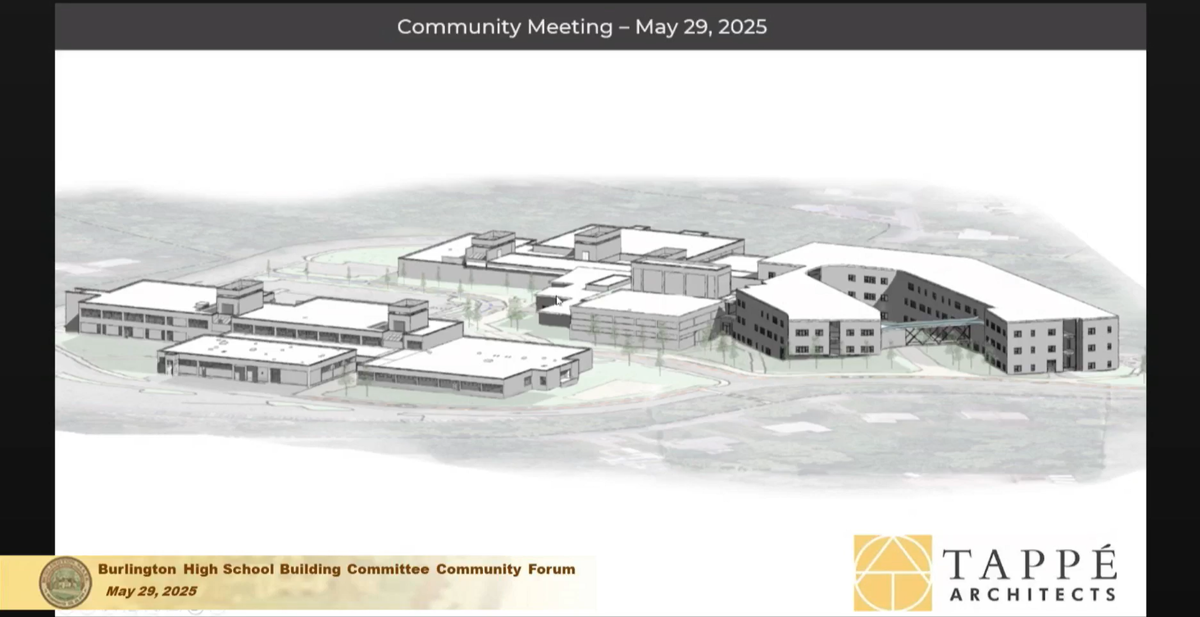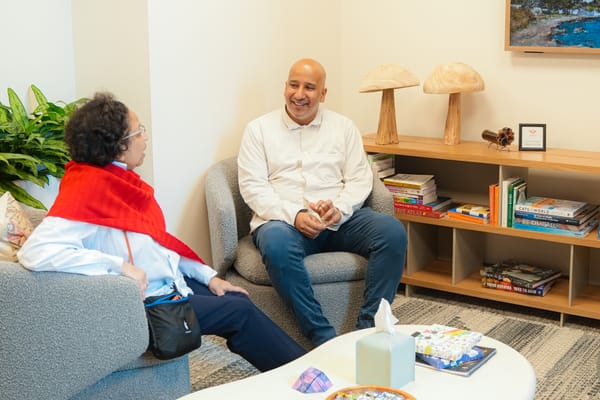Burlington High School Building Project Moves Forward with Updated Design
Burlington unveils updated high school design plans, focusing on traffic flow & safety, modernization, and preserving key spaces.

Plans are progressing for a new-and-also-renovated Burlington High School building, and the High School Building Committee and community members who attended last night's community forum seem satisfied with the direction in which the project is headed.
Schematic design plans, with an updated layout in response to feedback from the committee, were presented to the community in a hybrid meeting.
Chris Blessen of Tappé Architects articulated the plan for new and renovated space at the Burlington High School campus.
A major change to the current building will be the demolition of its center classroom area, along with the current horseshoe entrance driveway. The design preserves the ring road around the school for drop-off and thru traffic, and the space where center of the building used to be will leave room for a dedicated bus lane between two now distinct buildings. This will improve traffic flow and pedestrian safety.
The gyms, central administration, Burlington Cable Access Television (BCAT), LABBB Collaborative, Science Center, and Burlington Early Childhood Center (BECC) will be located in one building, roughly where they currently are, though their space will be renovated and some programs reshuffled to make the best use of the space.
The School Building Committee made the decision early in the process to keep this "non-high school space" due to the value of these programs to students and educators. While they're not classroom space, said Building Committee Chair, Katherine Bond, these spaces form an integral part of the students' learning experiences at the high school and help them develop skills they might not otherwise have access to.
On the other half of the campus, the auditorium will be preserved and renovated. A new three-story classroom wing will be built with distributed administration offices and special education spaces and a concentrated science floor. A new cafeteria will be built along with this addition, and outdoor dining and educational spaces are being considered.
Town Meeting and Ways & Means Committee member, Frank Monaco, asked about the heating systems, which are a major concern for the current building; Blessen said there will be a new, distinct system for each of the the two buildings.
The design, said Monaco, gives the town the best of both worlds, preserving what's already there while bringing the building up to modern standards and improving the useful space of the building. Committee member and Ways & Means Chair, Doug Davison added that, when complete, the high school might provide a place for residents to gather in case of a natural disaster – a space Burlington currently lacks.
While this project will be costly, Terry Hartford, representing Owner's Project Manager Dore & Whittier, said that not going through the state's reimbursement program means the town is not beholden to the state for what it can do with the space. What's more, the state wouldn't pay for a second gym and renovating the Burlington Early Childhood Center (a town-subsidized integrated preschool), for example, and so the bill for those parts of the project would have ultimately fallen to the town.
The schematic design cost estimate for the project is expected this summer, and the School Building Committee plans to go to Town Meeting for funding in September. If approved, a debt exclusion to fund the project without dipping into the town's excess tax levy capacity will need to be placed on the ballot for a town-wide vote.
The plans for the school, along with detailed explanations of the process and answers to frequently-asked questions such as "Why can't the town just renovate?" and "What are the benefits to residents without school-aged children?" – and, soon, last night's presentation – are on the BHS Building Committee website, where you can also submit questions that will be answered by the design team.





